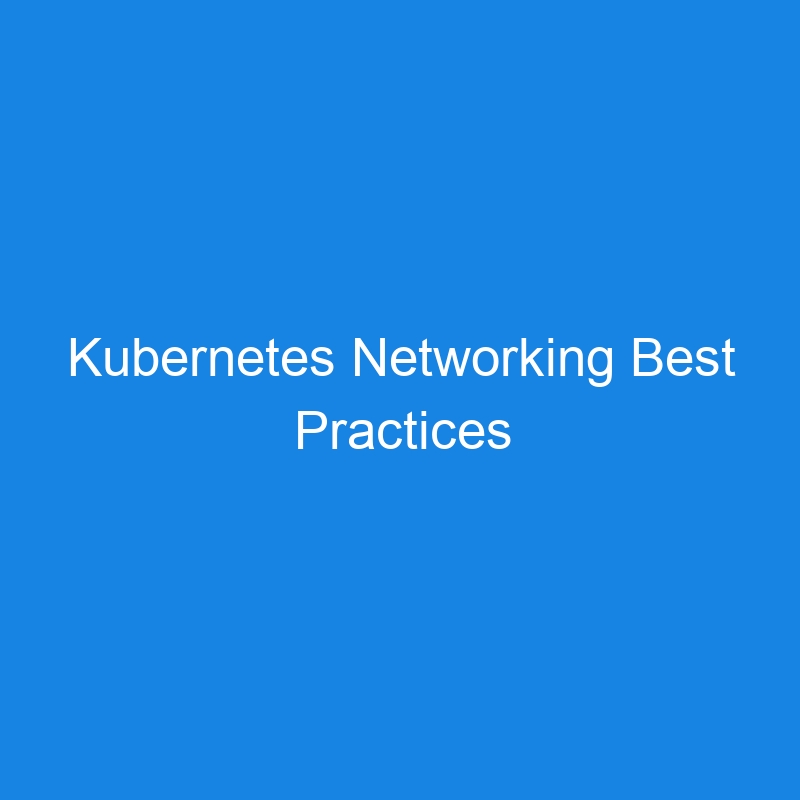Kubernetes networking is a crucial aspect of managing containerized applications. It ensures that pods can communicate with each other and with external services efficiently and securely. This blog outlines best practices for Kubernetes networking, providing sample code, YAML configurations, and diagrams to illustrate key concepts. By following these practices, you can enhance the performance, security, and reliability of your Kubernetes networking setup.
1. Use Network Policies for Security
Network policies in Kubernetes allow you to control the traffic flow between pods. By default, all pods can communicate with each other, which can pose security risks. Implementing network policies helps to restrict access based on your application’s requirements.
Sample YAML for Network Policy
apiVersion: networking.k8s.io/v1
kind: NetworkPolicy
metadata:
name: allow-specific-app
namespace: my-app
spec:
podSelector:
matchLabels:
app: my-app
policyTypes:
- Ingress
ingress:
- from:
- podSelector:
matchLabels:
app: allowed-app
2. Use ClusterIP for Internal Services
For services that only need to be accessed within the cluster, use the ClusterIP service type. This limits exposure to the outside world and enhances security.
Sample YAML for ClusterIP Service
apiVersion: v1
kind: Service
metadata:
name: my-internal-service
namespace: my-app
spec:
type: ClusterIP
selector:
app: my-app
ports:
- port: 80
targetPort: 8080
3. Leverage Ingress Controllers for External Access
Ingress controllers manage external access to your services. They provide a single point of entry and can handle SSL termination, load balancing, and URL routing.
Sample YAML for Ingress Resource
apiVersion: networking.k8s.io/v1
kind: Ingress
metadata:
name: my-app-ingress
namespace: my-app
spec:
rules:
- host: myapp.example.com
http:
paths:
- path: /
pathType: Prefix
backend:
service:
name: my-internal-service
port:
number: 80
4. Use DNS for Service Discovery
Kubernetes provides built-in DNS for service discovery. Always use the service name to communicate between pods instead of IP addresses, as IPs can change.
Sample Code for DNS Resolution
import requests
response = requests.get('http://my-internal-service.my-app.svc.cluster.local')
print(response.text)
5. Optimize Network Performance
To optimize network performance, consider the following:
- Use
hostNetworkfor performance-critical pods. - Tune the MTU settings for your network interfaces.
- Monitor network latency and throughput.
Sample YAML for Host Network
apiVersion: v1
kind: Pod
metadata:
name: performance-critical-pod
spec:
hostNetwork: true
containers:
- name: my-container
image: my-image
Conclusion
Implementing these Kubernetes networking best practices will help you build a secure, efficient, and reliable networking environment for your applications. By leveraging network policies, using appropriate service types, managing ingress, utilizing DNS, and optimizing performance, you can ensure that your Kubernetes networking setup meets the demands of modern applications.
